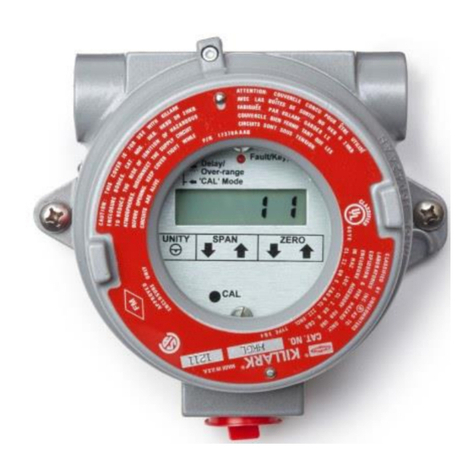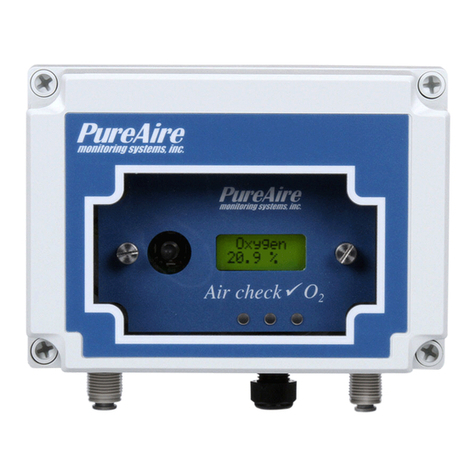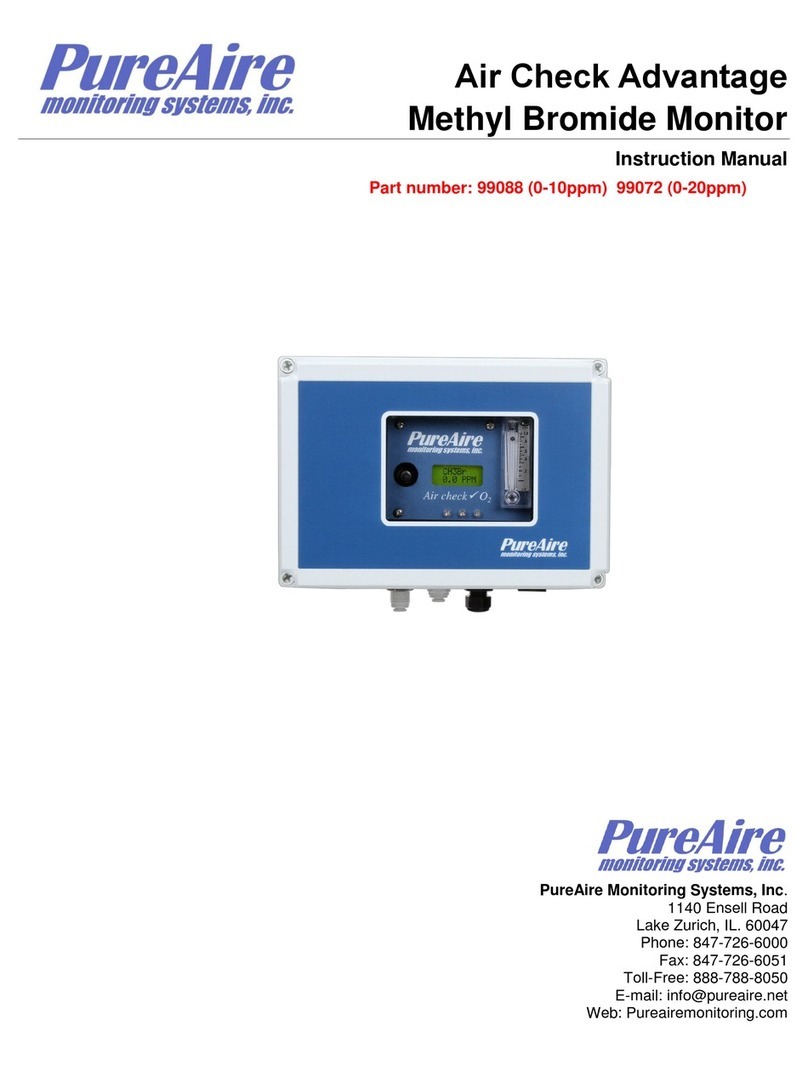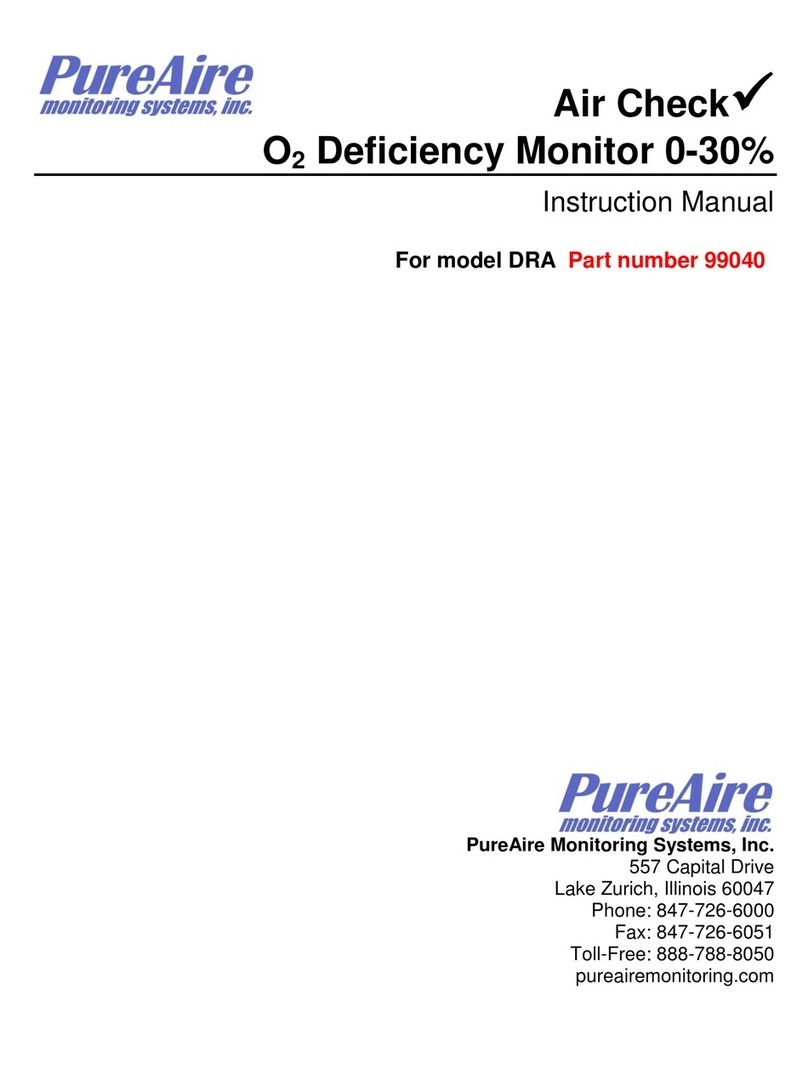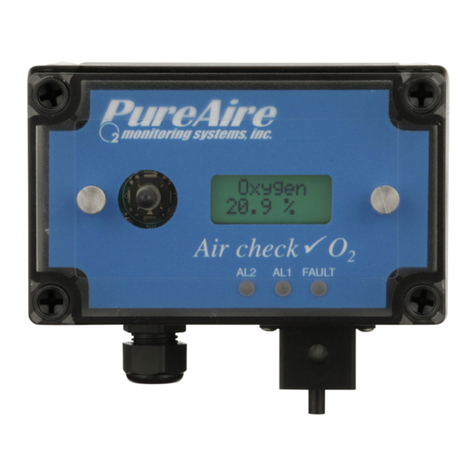
PureAire Monitoring Systems
Table of Contents
1: Introduction ...................................................................................................................1
1.1 Key Features ....................................................................... 2
1.1.1. Long Lasting Zirconium Oxide O2 Sensor................. 2
1.1.2. NDIR CO2 IR Sensor ..................................................2
1.1.3. Smart Electronics ........................................................2
1.1.4. Calibration................................................................... 2
1.2 Electrical Requirements.......................................................2
1.3 Physical Characteristics .......................................................2
2: Installation..................................................................................................................... 3
2.1 Site Requirements ............................................................... 3
2.2 Mounting..............................................................................3
2.3 Component identification ....................................................4
2.3.1. Front View Exterior with Relays .................................5
2.3.2. Monitor Interior ...........................................................6
2.3.3. Alarm Relay Board ......................................................6
2.4 Sample Inlet Filter………………………………………...7
3: Oxygen Monitor Specifications.....................................................................................9
3.1. Performance Specifications..................................................9
3.2. Gas Detection System..........................................................9
3.3. Signal Outputs .....................................................................9
3.4.Oxygen Monitor System Default Factory Settings ............10
3.5. Wiring ................................................................................11
3.6. Initial Startup .....................................................................12
3.7. Normal Operation............................................................13
3.7.1. Signal Outputs ........................................................13
3.7.2. Instrument Faults ....................................................13
3.7.3. Routine Maintenance Schedule ...........................14
3.7.3.1. Recommended Maintenance Schedule ......................14
3.7.4. Loss of Power Indicator ..........................................14
3.7.5. Alarm Reset ............................................................14
3.8. PureAire Oxygen Monitor Programming.....................15
3.8.1. Joystick Operation ..................................................15
3.8.2. Program Flowchart .................................................16
3.8.3. Entering the Password .........................................20
3.8.3.1. Changing User Password...............................21
3.8.3.2. Enable User Password....................................23
3.8.3.3. Rest User Password .......................................23
3.9. Entering the Menus.........................................................24
3.9.1. Set 4-20mA Loop ...................................................24
3.9.2. Set Formats .............................................................26
3.9.3. Set Alarm Threshold Polarity .................................28
3.9.4. Set Latching ............................................................30
3.9.5. Resetting a Latching Alarm ....................................33
3.9.6. Set Alarm Delay .....................................................33
3.9.7. Set Zero Suppression ..............................................34
3.9.8. Set Alarm Thresholds .............................................34
3.9.9. Set Alarm Hysteresis ..............................................36
3.9.10. Set Sensor Adjust..................................................37
3.9.11. Main Operation Mode...........................................38
3.10. Maintenance & Cell Verification .................................39
